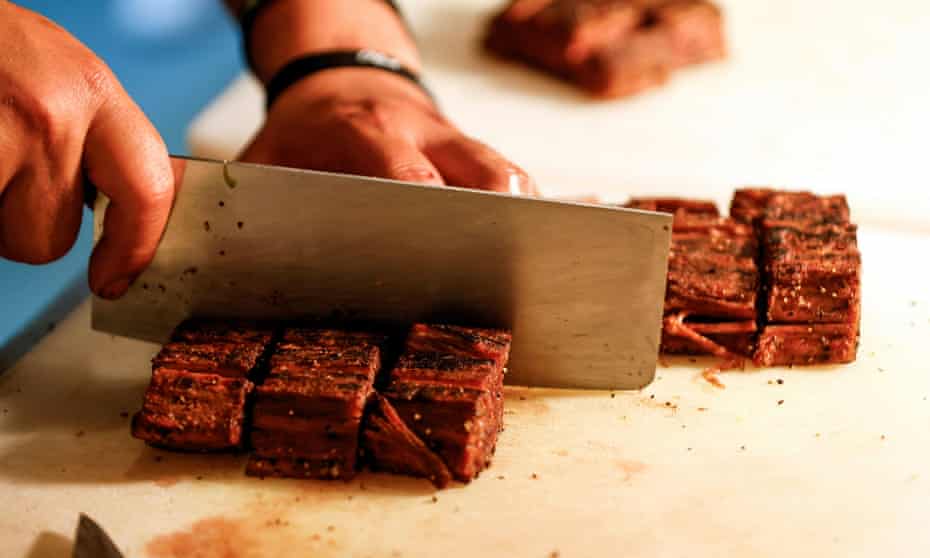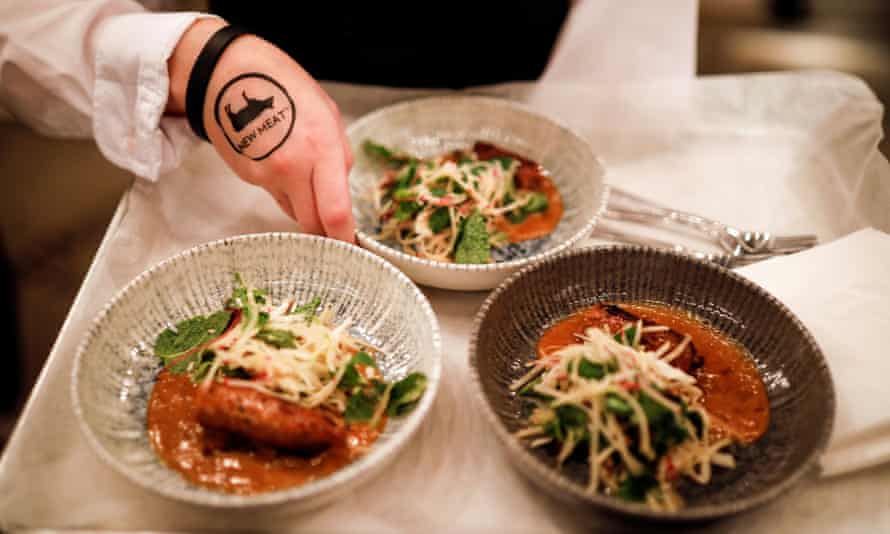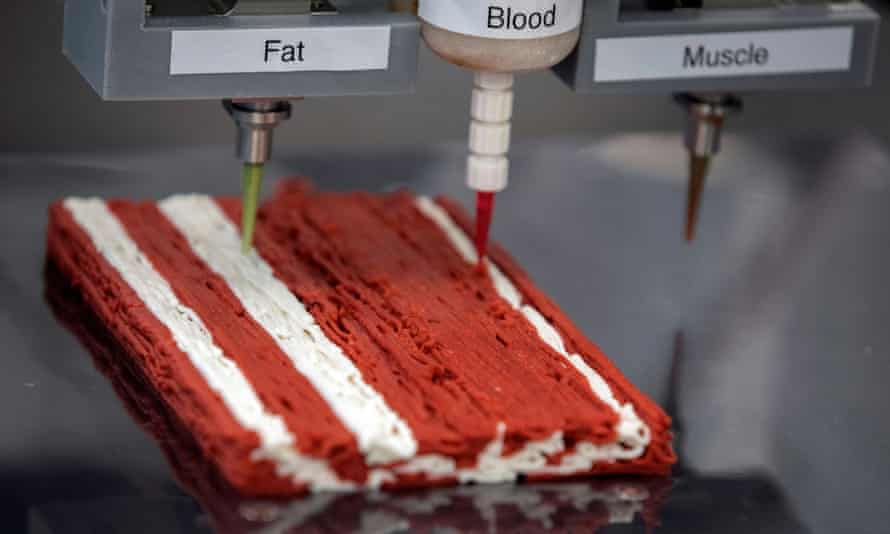3D-printed steak, anyone? I taste test this ‘gamechanging’ meat mimic
Marco Pierre White is championing Redefine Meat’s products, but do they live up to the hype?

Across four major cities – London, Amsterdam, Berlin and Tel Aviv – a new meat was born, containing precisely no animal. The London champion of the company, Redefine Meat, is the celebrity chef Marco Pierre White. At Mr White’s in Leicester Square, chefs, investors and barbecue and burger connoisseurs – as well as former winners of MasterChef – gathered to taste it.
The tone of the event was set by the offering of a pipette of “blood” – “Doesn’t it taste like blood, though?” asked an excited waiter. Well, yes. But memo from the world of carnivore: blood is more something we put up with than something we actively want to drink.
“I’ve had vegans complaining that this is too much like meat,” said Redefine Meat’s chief executive and founder, Eshchar Ben-Shitrit. “Personally, I don’t eat meat. I think it’s wrong to kill animals and eat them. But in order to get the flexitarian, it’s better to disregard the opinion of the vegan.”
Plant-based meat alternatives are nothing new, and the recent boom in demand from part-time vegetarians, or flexitarians, has fed a surge in innovation, from seitan to pea protein products. Yet this is an unarguable technological breakthrough. While a mince texture has been achievable for some time, plant-based whole cuts – which is to say, a cut that has the mouthfeel and the appearance of a steak, or a lamb chop – have long been considered beyond man’s wit.

Redefine Meat is cagey about which protein it uses (investors say it is soy; it also uses pea protein, along with ingredients your grandmother would recognise, beetroot, chickpeas, coconut fat), but is delighted by its method: the “meat” is 3D printed, and the mimicry is extraordinary.
The molecules of difference that create the flavour of beef, as distinct from that of lamb, are few but extremely powerful. This is certainly the closest synthetic approximation yet. Ben Bartlett, a chef and barbecue expert, said: “I judge on taste, texture and appearance – I’ve had so many bland and dull plant products. Then suddenly this came along and I was marking them 9s and 10s.”
The starter was “pork sausage” in a thick, umami-ish, Moroccan-tinged sauce of aubergine and yoghurt. It was not quite indistinguishable from the real thing, having a trace of sweetness that hinted at its true nature, but it was unmistakably the “gamechanger” that everyone describes.
But not until the beef dish was the technical achievement really shown off. It resembled a stifado, a slow-cooked Greek stew heaped with baby onions, and the form was judiciously chosen; how much it would look like a steak if it had been flash fried, I don’t know. Yet the resemblance to meat, in the grain, the way it pulls apart, the mouthfeel, is absolutely uncanny. “Many of the traditional meat alternatives are fine,” said Jane Devonshire, the 2016 MasterChef winner, “but you wouldn’t get them past my husband.” This beef, Mr Devonshire would approve.

White is not quite the unabashed carnivore his early image put across, and spent nine months as a vegan a decade ago. “I went from 20 stone to 15, I became fascinated by the weight loss. Then I started to look at cheeseboards and just hear a voice in my head saying: ‘Eat me.'” Nevertheless, he is associated with a certain mode of eating – fine cuts of noble provenance, a world away from processed or synthetic food. But he appears genuinely to have been won over by Redefine Meat. “I think it’s the cleverest thing I’ve seen in my 45 years in the industry,” he says.
Tom Cenci, the head chef at Stoney Street restaurant in east London, is slightly sceptical about flexitarianism, particularly when it’s done for environmental reasons. “Sometimes you don’t need to reinvent the wheel. If you’re eating asparagus on Christmas Day, or you’re not treating the animal you’ve slaughtered with respect, and eating the whole of it, that’s just as bad for the environment as eating meat,” he says. Yet he notes the importance of this innovation; the vegetarian offering of 10 years ago – a risotto at the bottom of the menu as an afterthought – isn’t cutting it any more.
The genius climaxes with a lamb dish, devised to be very like loin, dressed with peas. You would, no question, be able to tell what animal this was meant to be. It is as different to the “beef” as actual lamb is to actual beef, but still has that trademark, sweet back note. Would you choose it in lieu of lamb, when these 3D cuts are slated to cost about the same? It would take some flexitarian commitment to get you over the line.